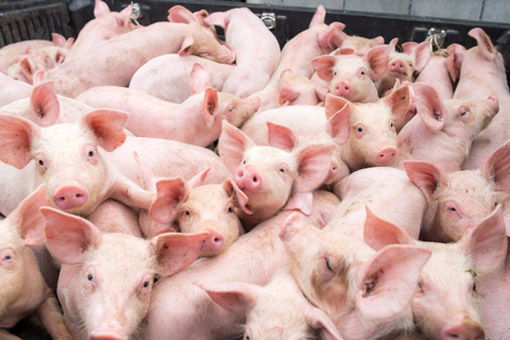Alexander Linnik: Kazakhstan has an enormous potential for hog breeding

The pandemic hit exports of pig breeding farms. "Previously, we supplied 30% of the volume of production to Russia, but because of COVID-19 our exports have zeroed in, now we cover only the domestic market," said Alexander Linnik, the production director of “Lugovskoy horse plant” LLP.
According to him, now the company undergoes the loss of the profit, since the pork price in the domestic market is lower than in the external one.

The horse plant built a pig breeding complex because it needed funds to maintain horses for racing. The decision to build the farm was made in 2010, and already in 2012 two pig breeding complexes, and a multiplication sow farm were built. 3 billion tenge of credit funds were allocated for these purposes. And in 2014, a feedlot complex was built. 600 million tenge was invested in it. To start the farm, 2 thousand sows were purchased. Now the inventory is 8 thousand pigs.
Although pig farming is not developed in Kazakhstan, business owners are confident that pig farming is one of the most profitable areas of animal husbandry. On average, it takes 1-1.5 years to build and launch a pig complex, after another year the business becomes self-sustaining. According to Alexander Linnik, to get a profit it is enough to have 600 head of sows, but professionals should work on the farm: pig farmers, livestock engineers. Otherwise, the business may draw a blank. The shortage of highly qualified specialists in the Kazakhstan market is a serious problem. Therefore, it is necessary to attract veterinarians, livestock technicians from Russia, Ukraine, but the work of foreign specialists is 3-4 times more expensive.
Kazakhstan does not have a high-quality pedigree pig livestock; this is due to a shortage of specialists who would be engaged in genetic research. Therefore, you have to buy sows abroad, primarily in Russia. Besides Russia, sows are better purchased in Denmark, Canada, Switzerland, Germany, Austria. But the cost of sows can be twice as expensive than Russian ones.
Of course, pig farmers face challenges, including animal disease and weak bank support. Banks do not want to finance agricultural companies at all, Alexander Linnik is convinced. This is because this agricultural sector is very risky, banks have been burned more than once on default agricultural projects, and they do not want to carry risks anymore. The fact that biological assets are not insured by Kazakhstan insurance carriers, compounds matters. And all the risks fall on farmers.
According to marketing research, Kazakhstan, besides Russia, exports pork to Georgia and Ukraine. The buyers of local pork both domestically and outside Kazakhstan are sausages production plants, meat is used as raw materials for processing. Russia protects its domestic market from meat exports. Veterinary services of the Russian Federation issue permission to Kazakh exporters grudgingly.
Pork is in demand in Kazakhstan, the demand for this meat has been growing over the past three years. According to Alexander Linnik, the Kazakhstan residents consume about 84 thousand tons of pork per year. Pork is mainly in demand in northern Kazakhstan, where the country borders Russia.
The Ministry of Agriculture of the Republic of Kazakhstan is negotiating with China that pork “made in KZ” could enter the Chinese market by the end of 2020. China is the largest pork consumer in the world. China is ready to purchase Kazakh pork, but in large volumes that Kazakhstan domestic market doesn’t have. Pork produced in Kazakhstan is valued because pigs are not hormone-fed.
In China, there is a huge shortage of pig livestock. In 2019, 30% of pigs died due to ASF. And now, to restore livestock, Chinese farmers may take 3-4 years. During this period, they will have to supply pork from other countries. For Kazakhstan, this is an opportunity to expand its export potential. According to Alexander Linnik, the price on pork exports is higher than domestic by 30-50%. At the same time, in an interview, the head of the Kazakhstan Union of Pig Farms said that the country has great potential in the development of pig farming. This is due, inter alia, to the fact that there is a good feed base. After all, it is grain that is the basis for feed. According to the Committee on Statistics of the RK Ministry of National Economy, on average, one Kazakhstan citizen consumes about 5 kg of pork per year. At the same time, according to Eurostat, in Europe such an indicator is 45 kg per person per year, in China - 40 kg, in Russia - 30 kg.
Thus, Kazakhstan has great potential for the development of pig farming. In addition, the country has a favorable geographical position - proximity to Russia and China. At the same time, world pork prices are rising. If three years ago they did not exceed 1 euro per kilogram, now they reach 2 euros due to the shortage of pork in the world market, which was provoked by the African Swine Fever disease.
SOURCE: kapital.kz